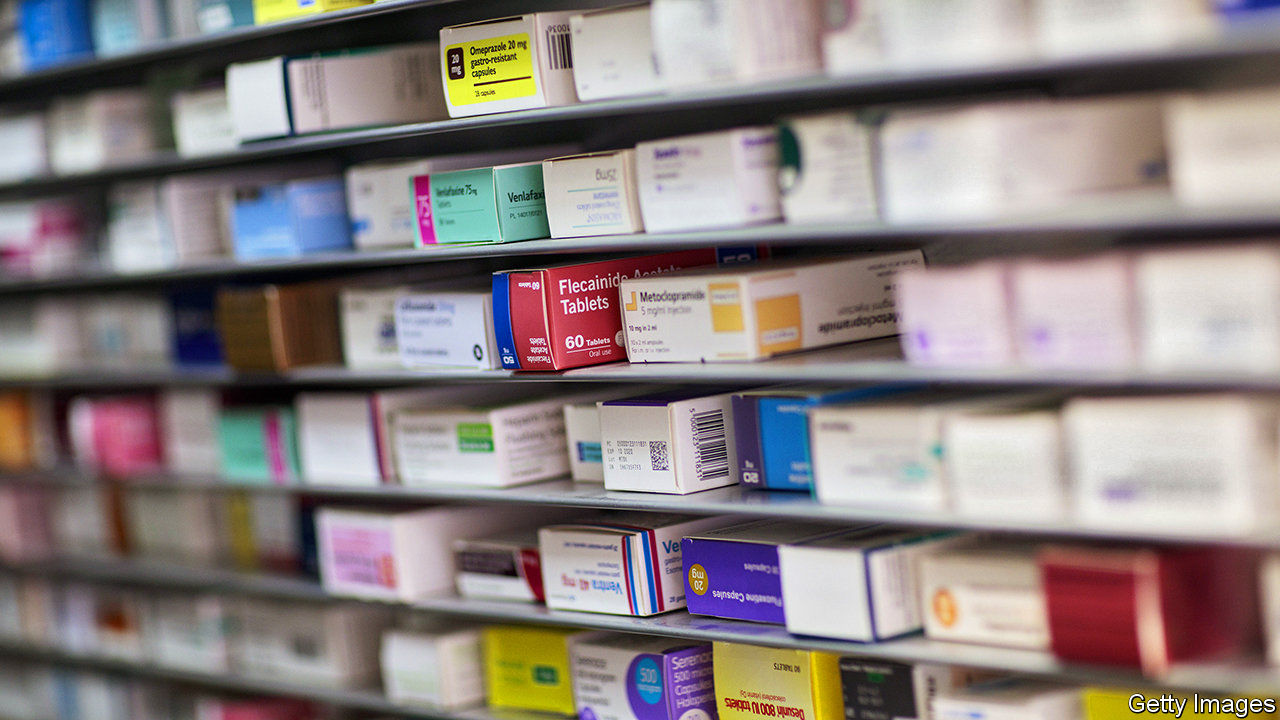Western countries, as well as poor ones, are demanding transparency in the cost of drugs

THESE DAYS it is hard to find a government that is not struggling with the high price of medicines. In England, the government is fighting Vertex, a drug company, over the cost of a drug for cystic fibrosis, Orkambi. In America, diabetics have died because of the high cost of insulin. In the Netherlands, the government for a time stopped buying the immuno-oncology drug, Keytruda, because it was too expensive—even though it had helped to develop it. The list price of Orkambi is about $23,000 a month in America, and Keytruda is about $13,600 month (for as long as treatment continues). It has taken such rich-world dramas to force the unaffordability of medicines to the top of the global health agenda, even though poorer countries have complained about it for decades
On May 20th governments started tackling the issue at the World Health Assembly (WHA), an eight-day policy forum where health ministers define the goals for the World Health Organisation for the coming year. There is a lot for them to discuss, including the expansion of universal health care, antimicrobial resistance, the impact of climate change on health and the deepening crisis of Ebola in the Democratic Republic of Congo. Yet the hottest topic is the high price of new medicines, particularly cancer drugs.
In February the Italian health minister, Giulia Grillo, published a draft resolution on drug pricing. It calls for international action to improve the transparency of prices and R&D costs, as well as the costs of production of medicines. Firms will also be asked to divulge all the different forms of government support they receive. These may range from venture-capital funds and start-up financing to tax incentives and even research conducted by academics. The hope is that greater clarity should lower drug prices. The Italian proposal is backed by many countries, rich and poor.
Pharmaceutical companies currently publish only list prices. These are large, somewhat fictional numbers that are subject to being bargained down. Just how big a discount governments, insurers and other middlemen can secure is confidential. Many have concluded that all the secrecy is putting those who pay for the drugs at a disadvantage. Els Torreele of Médecins Sans Frontières, an NGO, says that different buyers—even those in the same country—can be charged widely differing prices. “Prices are kept secret and buyers are asked to sign confidential agreements,” she says. And despite the fact that, in theory, poor countries might be charged less than rich ones, there are concerns that the reverse may in fact be true.
Drug firms are not pleased. The International Federation of Pharmaceutical Manufacturers and Associations told Stat, a medical-news website, that the draft resolution would “divert attention and resources from finding sustainable solutions to access”. Britain, Germany and Denmark are trying to water down the proposal, probably under pressure from their large pharma industries—even though they are all facing growing drug-pricing problems at home. Pharma companies have long argued that the costs and risks of developing a drug warrant high prices. They argue that greater price transparency will mean that poor countries will no longer get good deals, because firms will not want to undermine their ability to extract high prices from wealthier states.
But the degree to which poor countries get favourable treatment is usually unknown, except for some high-profile cases: vaccines, perhaps, and antiretroviral drugs to treat HIV infections. The WHO estimates that 100m people fall into poverty annually owing to the prices they pay for medicines. Moreover, there is evidence that the prices charged for some drugs are, indeed, unreasonably high. A WHO report at the end of 2018, on cancer medicines, concluded that companies priced their drugs largely according to their expectations of income, rather than what the drug cost to make or how to maximise access to patients. That a firm is making as much profit as possible is, perhaps, unremarkable. However, drug firms are not ordinary companies. Their products are needed to save lives, and they obtain monopolies on their drugs through patent systems granted by governments and, by extension, society.
The WHO also found that, even acknowledging the high cost of developing drugs, cancer medicines are generating returns far in excess of the R&D costs, and far more than is necessary to finance and create incentives for future efforts. It also appears that cancer drugs are more expensive than other medicines—seemingly because buyers are willing to pay more to treat terminal conditions. Australian data show that the cost per prescription for cancer drugs is at least 2.5 times higher than for other medicines.
The pharma industry generates large profits. In America, 12 of the country’s most profitable drug companies reported more than $29bn in profits in the first quarter of this year, according to Axios, a news website.
Advocates argue that transparency will allow people to judge whether governments have made good decisions about the medicines that they buy. In countries with weak governance, more transparent pricing should help to combat corruption.
America has made drug-pricing transparency a priority recently, and drug-makers must now disclose their list prices even on television advertisements. (List prices are important to patients because they may have to pay a proportion of this sum themselves.) Whatever the outcome this week at the WHA, pharma companies will face growing demands to come clean about the cost of life-saving drugs.
No comments:
Post a Comment
Note: Only a member of this blog may post a comment.